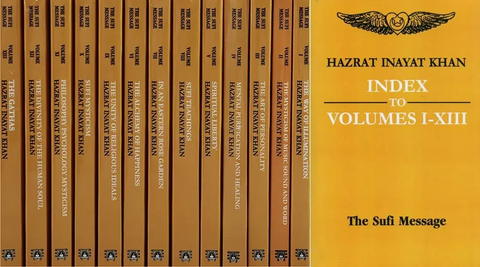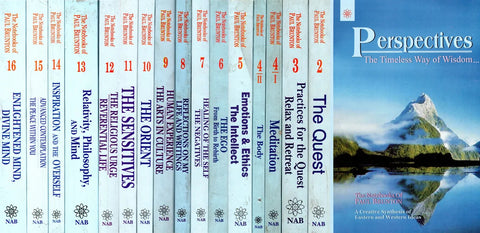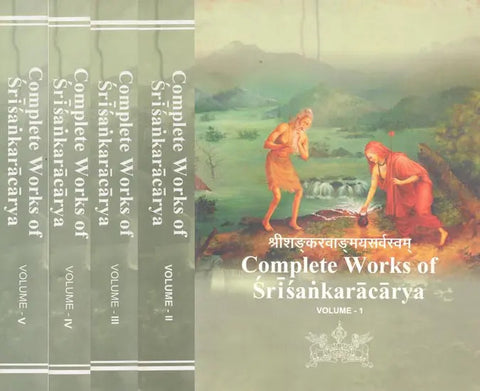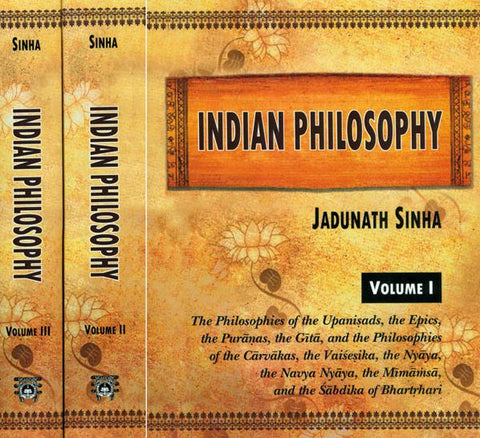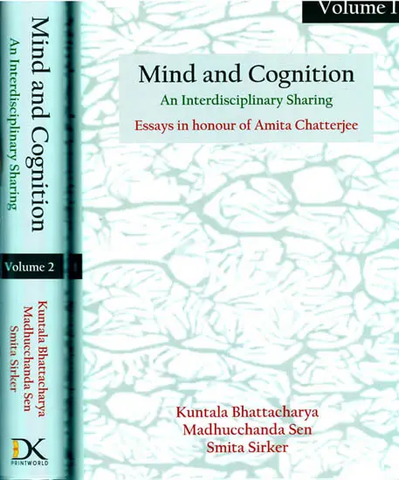Your cart is empty now.
The Paratrisika Vivarana by the great Kashmiri philosopher and mystic Abhinavagupta is an extensive commentary on the Paratrisika Tantra, and it is one of the most profound texts, not only of non-dualist Kashmir Saivism, but of Indian philosophy and mysticism in general. The present work attempts to make this difficult text accessible, by culling out the important themes and offering an interpretation. The main focus is on the understanding of the Absolute (Anuttara) and the ways to realize it. The central theme of mantra also leads to a mysticism of language with its philosophical implications. All these reflections and practices are inscribed in the theory that “everything is related to the totality”, “every part contains the whole of reality” (sarvam sarvatmakam). It is this holistic vision of Abhinavagupta, based on the Tantras, which makes this work so relevant in our times of fragmented aspects of life and knowledge in search of integration. No doubt, in the view of the Tantra and of Abhinavagupta, language and mantra provide the key.
This fascinating book is an important contribution to studies and interpretations on Kashmir Saivism, its spirituality and philosophy, and on Abhinavagupta in particular.
Dr. Bettina Baumer, indologist from Austria and Professor of Religious Studies (Visiting Professor at several universities), living and working in Varanasi since 1967, is the author and editor of a number of books and over 50 research articles. Her main fields of research are non-dualistic Kashmir Saivism, Indian aesthetics, temple architecture and religious traditions of Orissa, and comparative mysticism. She has been Coordinator of the Indira Gandhi National Centre for the Arts, Varanasi, and Fellow, Indian Institute of Advanced Study, Shimla. She has translated important Sanskrit texts into German and English.
Dr. Andre Padoux, Paris, is one of the foremost scholars on Tantra, Kashmir Saivism, and mantrasastra.
Foreword
This study by Bettina Bäumer is important and welcome because it deals with what may well be considered as the very core — metaphysically and mystically — of Abhinavagupta’s teaching, and of what he still can tell and teach us. Its importance is, of course and foremost, due to the fact that it deals with a work by Abhinavagupta who — as Bettina Baumer forcefully says in her introduction — is undoubtedly one of the most remarkable, “extraordinary,” thinkers of India — perhaps the most exceptional one by the breadth of his interests and talents, his acumen and profoundness. He was also a master of Sanskrit — a Sanskrit sometimes difficult to decipher, because both of an idiosyncratic style and of the subtlety of the thought it expresses — and Sanskrit has the pride of place in the Paratrisikavivarana (PTV) several of whose main conceptions bearing on linguistic- phonetic elements: phonemes, syllables (varna, aksara), or mantras. Typically Indian, indeed, in this respect, was Abhinavagupta. For no other culture than the Indian one has given the same importance to speech or language — here in the form of Sanskrit — speculating endlessly during centuries on its constitutive elements, its organisation, uses and powers. Not by chance did the first ever systematic — one could say scientific — description of a language, Panini’s grammar, appear in India.
Such metaphysical-linguistic speculations (linked to ritual) are essential in the PTV, more than half of the thirty-six stanzas of the Paratrisika (PT) concerning the subject. For the PT, the path to the Supreme, anuttara, to liberation, is the spiritual-mental, cum bodily and ritual, experience and mastery of a mantra, the hrdayabija SAUH. Very typically Tantric (we may note) are the PT and the vivarana in this global approach; for if the condition aimed at by the adept is spiritual, transcendental, it is experienced, ‘lived,’ mentally and corporally by an incarnate person, living in this world, an adept or devotee performing rites. These are not mere accessory concrete elements to a purely spiritual quest. The quest, surely, is spiritual — and this is the fundamental aspect which is the theme of this hermeneutical study. But it is the quest of a human being, not of a purely spiritual entity. Hence the importance of concrete elements, linguistic or ritual, uttered, visualised, or both intellectually and bodily acted out — the linguistic elements, when they are mantras, being themselves ritually “extracted,” then animated and put into action by rites which, being Tantric, consist as much in mental visualisations as in actions. What takes place is the transformative total experience of a living being.
One might, in this connection, note that what the Goddess asks for in the first stanza of the PT is how khecarisamatã is to attain: how to penetrate, that is, in kha, in the central mystical void within the heart. This is a spiritual, mystical, process. But, in early Tantras such as the Brahmayamala/Picumata, one meets Khecaris, which are a class of Yoginis moving in the space who can bestow supernatural powers. Later, the Krama tradition saw the creation of the world as being due to four forms of divine power imagined as swirling wheels of energy (sakticakra) whose movements create and animate not only the cosmos but also the senses and the mind of human beings, the highest of these being khecari, a conception taken over by Abhinavagupta as appears in the gloss on khecarisamatam of the PTV (pp. 39 ff. of the Kashmir Series edition). If khecari can be in a state of equilibrium (samatta), she is nevertheless made up of the senses and their objects. She is characterised by “the fluctuations of passion, anger, and so forth” (saiva khecari kamakrodhadirupataya vaiamye1ia laksyate). Her equilibrium therefore is charged with power. It is not a peaceful calm, but the intensity of dominated power. This is what a Tantric adept is looking for. The Tantric liberated person is a siddha: transcending this world but also dominating it. Abhinavagupta, when he is described as a living person (apocryphally, of course, but not without plausibility), is not shown as an ascetic world-renouncing sadhu, but on the contrary as enjoying many worldly pleasures. He was an aesthetician; an aesthete too, we may presume. The world of Tantra is a world of passion. Passions dominated, of course, but passions made use of to reach what is beyond them, but includes them. The Tantric case as a way of life is a case of particular, extreme, intensity. In this respect it differs from other traditions which are also ways of life. We may also note here in passing that all philosophies are ways of life, as was underlined by Pierre Hadot (who I was happy to see quoted in the introduction).
Am I here contradicting the main theme of this excellent book? Of course, not! I merely take the opportunity of this preface to evoke some aspects of the Tantric domain I happened to study. My approach differs from Bettina Bäumer’s more on details or orientation than on essentials. Ours is an old friendship. I have known Bettina Bäumer when she was still a young scholar. We worked together for some time in a research unit of the CNRS. We have remained friends and colleagues ever since, exploring, each in his/her own way, the same domain, treading in some respects the same not always easy path. We have both worked with Swami Lakshman Joo, I however much more briefly than Bettina, never being as near to him as she was and still is. My somewhat different approach to some problems does not prevent me from fully appreciating the present work. We differ but sometimes converge: this is the case here. Her hermeneutical approach of the PTV is, I feel, very fruitful both in setting out and clarifying Abhinavagupta’s meaning, and in bringing out what it can still say to us. In this respect, her approach will prove very useful. I confess to being all the more ready to commend this approach, and the fact that it concerns Abhinavagupta’s thought, because Indian Philosophers of today seem to be either fascinated by Sankara’s advaita as if it were the acme of Indian philosophical thought, which, whatever its merits, I believe it is not, or, when they develop a philosophical stance of their own, to be mere epigones of the analytical thought the British have inherited from Vienna — a less ‘philosophical’ form of thought being hard to imagine.
To come back to the PTV, Abhinavagupta’s emphasis on gnosis, on the intensity of immersion, on the absorption in the Supreme, is not to be doubted. The ultimate teaching of the PTV is clearly the transcending of ritual (to use the title of the last chapter of this book). One may perhaps ask oneself whether Abhinavagupta wasn’t, in this respect, overemphasising this aspect of the PT’s teaching. This is possible, but all the less certain since already such earlier Tantras as the Jayarathayamala, to which Abhinavagupta often refers, notably in the Tanträloka, prescribe the adept to respect, in the social field, the rules of the varnasramadharma. He had all the more reasons to do so since in his time Tantra had ceased being the practice of small transgressive ascetic groups (were they ever those of larger groups? in spite of its pervasion of the Hindu world, Tantra was always a matter of active minorities), but were the secret private practice of well-established, socially conservative grhasthas. (Tantra was never socially transgressive — quite the contrary). As such it has survived during centuries, marked innumerable aspects of Indian culture, however, in the particular case of the Trika, remaining only as a metaphysical system (mystical, too), its ritual aspect having disappeared. Tantric rites and practices went on surviving and survive, sometimes very actively, but in other traditions, for other cults, among other groups, in other centres (or countries). We go on reading the Tantraloka, but nobody would dream (or be able, and still less qualified for) performing the rites described in the thirty odd chapters of this text which follow the first five where Abhinavagupta (as we are reminded here) proclaimed the equal usefulness and uselessness of ritual practice. But, ritual being transcended, what remains, on the metaphysical and the mystical plane, expounded in several passages of the PTV, is precisely that which can say something to us, be of some — essential! — use in this present world. By translating and interpreting this text over 1000 years of history into a completely different context is surely hazardous. It is a difficult work, where subtlety, ‘acribie,’ empathy are needed — and are found here. Bäumer’s “double adhikara,” as she calls it: to have worked with Swami Lakshman Joo in “a unique personal union” and to be well trained in European Indology, made her specially apt for this work.
In her introduction, Bettina Bäumer hopes that her “intercultural work in hermeneutic” on the PTV will not only make this text accessible but also have its relevance for our present world: she has, I believe, perfectly succeeded in doing so.
| Foreword by Andre Padoux | vii | |
| Acknowledgements | xi | |
| Abbreviations | xvii | |
| Introduction | 1 | |
| The Text and the Commentary | 2 | |
| The Tantra | 5 | |
| Abhinavagupta | 7 | |
| Vivarana | 10 | |
| Anuttaraprakriya | 12 | |
| Abhinavagupta’s Method | 15 | |
| Addressees of the Vivarana : Prayojana and Adhikara | 17 | |
| The Context: The Place of the Text in the Tradition | 20 | |
| Hermeneutics and Tantric Exegesis | 26 | |
| The Problem of Translation | 28 | |
| The State of Scholarship on the Paratrisika Vivarana | 31 | |
| The Authorship of the Laghuvrtti | 33 | |
| The Spread of Anuttara Trika/Parakrama | 35 | |
| My Approach | 38 | |
| Text Editions and Translations Used | 40 | |
| 1 | The Tntrance Gates: Mangalaslokas (Benedictory Verses) | 43 |
| 2 | The Supreme Dialogue | 57 |
| Guru-sisya Sambandha | 63 | |
| 3 | Anuttara: The Unsurpassable and its Meanings | 67 |
| Anuttara as Bestowing the Perfection of Totality: Kaulikasiddhidam | 79 | |
| Immediacy: Explanation of Sadyah | 83 | |
| Anuttara and the Interconnectedness of all Things | 84 | |
| The Sutra: uttarasyapi-anuttaram | ||
| 4 | Khecarisamata: Harmony with the Power of Consciousness Moving-in-the-Void | 91 |
| 5 | The Three Grammatical Persons and Trika | 101 |
| 6 | The Heart – the Resting Place of I-Consciousness | 113 |
| 7 | From the Absolute to Manifestation: Anuttara to Kaulikasrsti | 125 |
| The Two Sections | 125 | |
| Pratibha: Illuminating Insight | 132 | |
| Pratibha, Grace and Spiritual Practice | 135 | |
| Nirvikalpa Samvid – The Basis of Thought and Language | 137 | |
| 8 | Levels of Manifestation: Emanation of Phonemes and Tattvas | 141 |
| Emanation of Phonemes and Tattvas in Verses 5-9 | 144 | |
| A Commentary on ‘a’ | 146 | |
| A Note on Method | 149 | |
| The Kancukas or Limiting Powers and their Seed-Syllables | 151 | |
| The Five Brahmas | 156 | |
| The Universality of Sound: Nada and Svara | 157 | |
| The Questions of the Plurality of Languages | 161 | |
| The Four Levels of the Word (Vak) | 165 | |
| The Universe of Language: The Language of the Universe Bindu | 178 | |
| Visarga | 179 | |
| The Goddess Alphabet: Matrka and Malini | 183 | |
| The Specular Nature of Reality: Bimba-Pratibimba | 189 | |
| Concluding Verses | 197 | |
| 9 | The Core Mantra: Hrdayabija, The Seed of the Heart | 201 |
| Decoding the Mantra | 206 | |
| The Means of Entry into Brahman: Pravesopaya | 213 | |
| Commentary on Verses 11-18 | 217 | |
| The Relation of Time to Spiritual Powers | 220 | |
| Erotic Symbolism | 226 | |
| 10 | Transcending Ritual | 229 |
| Knowledge Substitutes Ritual | 234 | |
| The Fruit of the Practice | 255 | |
| The Heart, the Resting Place of All | 259 | |
| Conclusion | 263 | |
| Abhinavagupta’s Personal Conclusion | 263 | |
| General Conclusion | 267 | |
| Appendices | 277 | |
| 1. Verses of the Paratrisika | 277 | |
| 2. List of Quotations in the Paratrisika Vivarana | 281 | |
| 3. Stotra Fragments of Abhinavagupta quoted in the Vivarana | 289 | |
| 4. Comparison between the PT Versions of Vivarana and Laghuvrtti | 291 | |
| 5. Abhinavagupta: Anuttarastika – Text and Translation | 296 | |
| 6. Bibliography | 301 | |
| 7. Index/Glossary | 317 |
Delivery and Shipping Policy
- INTERNATIONAL SHIPPING
- Rs.1000-1100/kg
- ESTD. Delivery Time: 2-3 weeks (depending on location)
- Bubble Wrapped with Extra Padding
- NATIONAL SHIPPING
- NCR: Rs. 30/half kg
- Standard: Rs. 80/half kg
- Express shipments also available on Request
- ESTD. Delivery Time: Ranging from 1-4 days up to 7 business days (Depending on your choice of Delivery)
- TRACKING
- All orders; national or international, will be provided with a Tracking ID to check the status of their respective orders
- Depending on the Shipping Service, Tracking ID may be used on their respective tracking portals
Frequently Asked Questions (FAQs)
Domestic Shipping: 3-4 Days (after shipping)
International Shipping: 1-2 weeks (based on your location)
You will receive an email once your order has been shipped or you can email us if you didn't receive tracking details (info@mlbd.co.in)
Every book that we sell is the latest edition except all the rare books
Yes, we do provide free shipping, only on domestic orders (within India) above Rs.1500









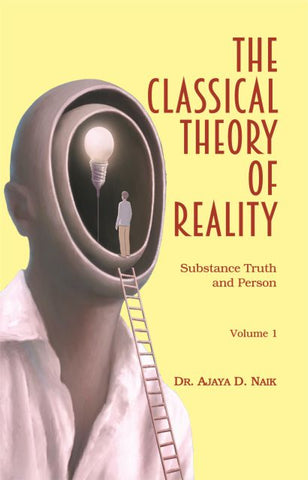
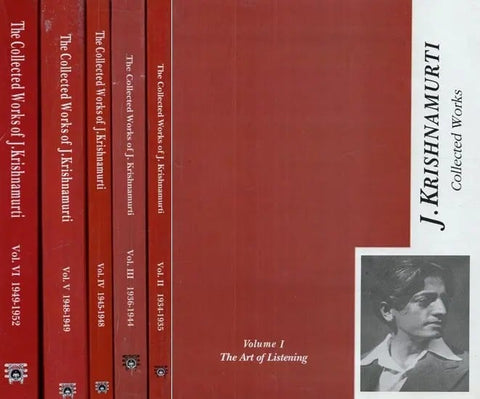

![A HISTORY OF INDIAN PHILOSOPHY [5 VOLUMES] by Surendranath Dasgupta](http://www.motilalbanarsidass.com/cdn/shop/products/HISTORYOFINDIANPHILOSOPHY_large.jpg?v=1675238163)
